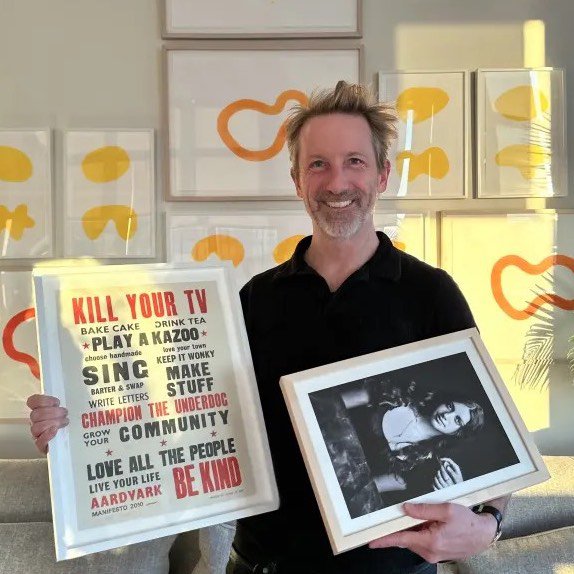New York-based photographer Drew Doggett tells us what fashion's got to do with it, what's on his wall, and what adventure he's off to next.
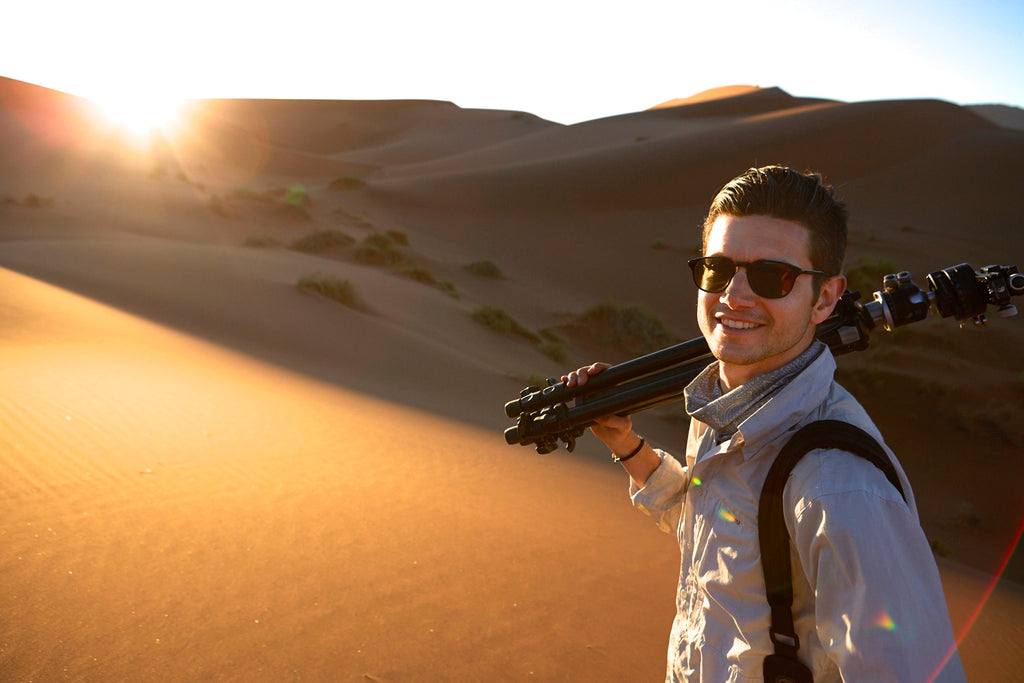
Drew on location in Sossusvlei, Namibia.
SF: Where are you from? What elements of your upbringing have influenced your career path?
DD: I’m from right outside of Washington, D.C., a little suburb called Potomac, Maryland. My father is an architect and I was always interested in architectural photography growing up. I took some photo courses in high school, but there wasn’t much training in fine art photography available to me at that time.
I did not go to college for photography but I met a portrait photographer in Nashville when I was a student at Vanderbilt who became a mentor to me. I spent all of my time outside of school working in photography, and I knew after having that experience that this was what I wanted my career to be.
I moved to New York right after school and was lucky enough to assist some of the best fashion photographers in the business—Steven Klein, Mark Seliger, Craig McDean, and Annie Leibovitz among others. You can see how fashion has influenced how I capture and frame my subjects.
SF: In what way?
DD: Well, in addition to photographing the horses from my Sable Island series in their environments, I also focused on the body by dissecting the horses with my camera in a way that emphasizes their strength and beauty. You can see that same approach in my Oma Valley series. This is a carry-over from fashion photography, a certain sensuality in approach. It’s all about the shapes and subtleties.
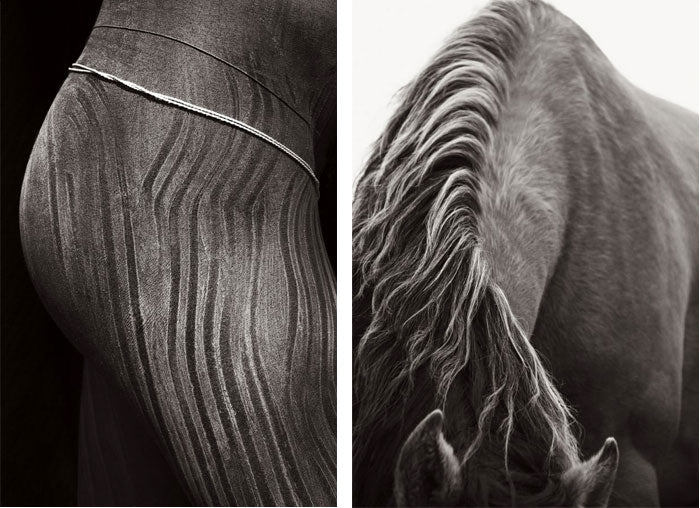
From left: Mane and Oma: Untitled 3 from Drew's Sable Island and Oma Valley series. respectively.
SF: Why have you chosen to pursue subject matter outside of the fashion realm?
DD: My love of traveling and of unique cultures is originally what pushed me into the fine art world. I am intrigued and inspired by remote and indigenous cultures that have changed very little over centuries. Capturing that and sharing that with a larger audience is something that I’m passionate about. I really enjoy exploring and learning about each culture’s defining elements and then finding ways to convey the spirit of their traditions.
SF: Your subjects seem to all have an organic, wild element to them, but they’re framed and often staged in very graphic, modern contexts. What can you say about this contrast?
DD: I strive to create photographs that can be displayed as the feature piece in a living space. The way I frame my subjects with the camera often involves simple backgrounds and lots of negative space, which allows the organic nature of the subject to stand out. It also helps that the simple, straightforward framing solution I’ve developed with Simply Framed doesn’t distract the viewer from the images but enhances them instead.
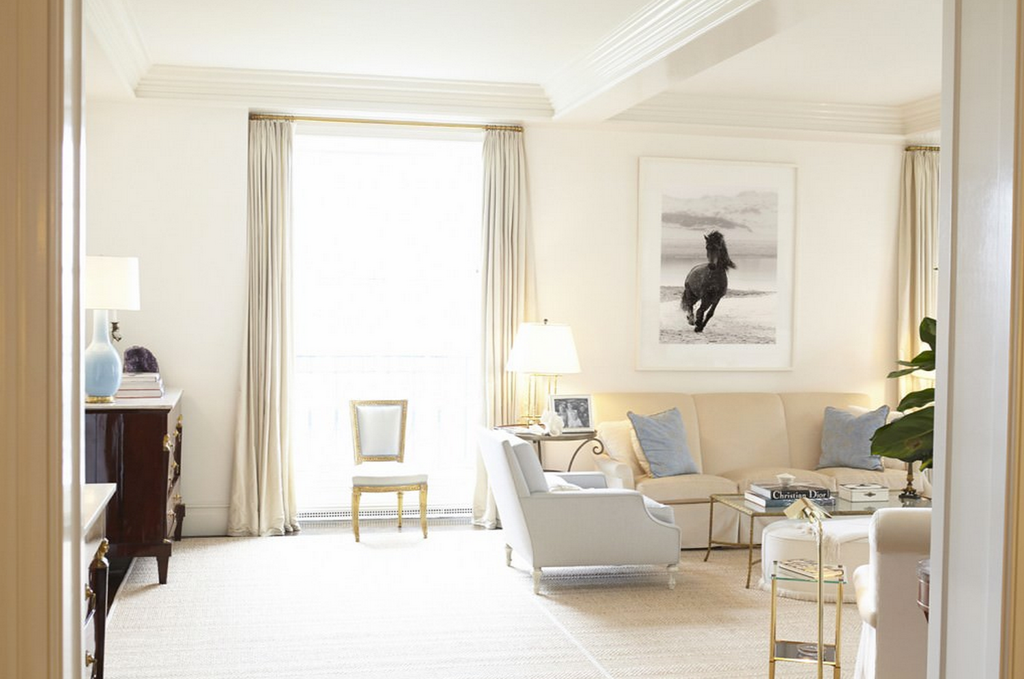
Drew's photograph The Chase in a client's formal living room.
SF: Why black and white?
DD: Black and white enables me to craft an image so that the viewer can appreciate the shapes, tones and subtleties of a subject that might be overlooked in a color image. There’s something so classic to me about it, and I enjoy being able to play with that by shooting in a very contemporary way.
SF: What’s on your wall?
DD: I have two large black and white images from the Rosenfeld Collection. They are of 1920s racing sailboats and they hang in my dining room. I grew up on the water, and the elegance and simplicity of these boats is an inspiration for my work.
The second piece is one of my own - #9 from the Oma collection. It’s a horizontal portrait of this young Suri boy wearing a ceramic earring. This culture’s creativity is manifested through the decoration of their bodies. The way this boy has chosen to identify himself reminds me that beauty is sometimes in the simplest designs.
The other thing I love about the image is that he holds his head so high. This tribe's identity and sense of self is so powerful. I really admire that.

Omo: Untitled 9 on view in Drew's home.
SF: Many young artists are beginning to market directly to the collector, selling their work online and showcasing examples of how to incorporate it into your home. How do you feel about combining the role of artist and interior designer?
DD: I think that it’s so very important as we move into the online space for collectors to see what my photos look like in a home environment. When you can’t see or touch the pieces in person as you might in a traditional gallery, seeing them in context is helpful and gives confidence to the person making the investment.
SF: Is bigger always better when it comes to framing photography for your walls?
DD: Bigger isn’t always better, but I’ve found that many of my images reproduce better at larger sizes. Take for instance Layers of Light from my Dunes: Landscapes Evolving collection. From a distance, the large shapes they’re making as they overlap each other are obvious. But when you get closer you really start to notice the texture and patterns in the sand, as well as the subtle shifts in tonal value. These are details that I think can only be truly appreciated at a larger size. Also, with some of the images, like Desert Rising—one of my personal favorites from this collection—a large print helps put into context the scale and size of the subject matter.
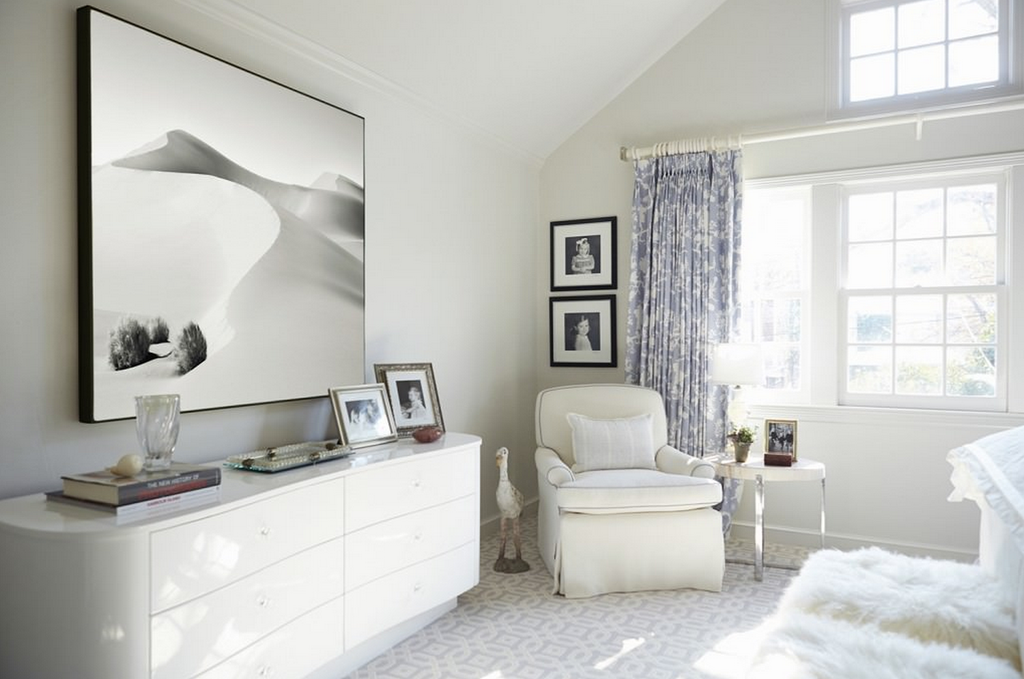
Drew's photograph Sanctuary from his Dunes series on view in a client's bedroom.
SF: Your favorite artist of the moment?
DD: Nick Brandt, Sebastiao Salgado, and Peter Lindbergh are all major inspirations for me. Nick Brandt's Elephant With Exploding Dust is my favorite image of his. The very first time I saw it, I instantly fell in love. The dust rising off the back of the elephant against the rich black sky creates a dramatic scene. There's an elegance about the image. It's remarkable how such a large animal can move with such grace.
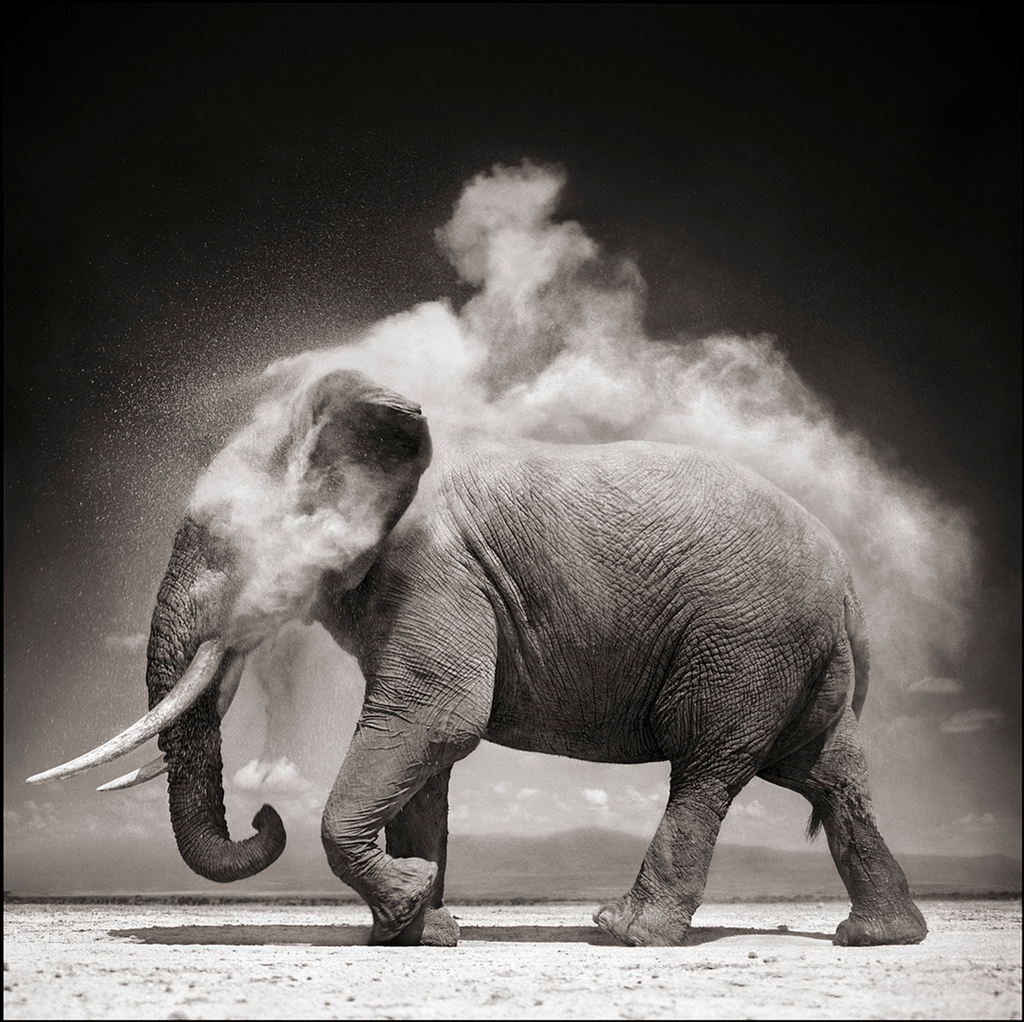
Elephant with Exploding Dust by Nick Brandt.
SF: Helena Christensen hosted one of your first openings, a showing of your Slow Road to China series. How did you two connect?
DD: Helena and I share a similar passion for indigenous cultures. She has, in a very incredible way, partnered with and advocated for several charities through her work. I‘ve accompanied her on a number of her trips to various locations for Oxfam, an organization where she serves as an ambassador. She has been a great supporter of my work.
SF: What’s next for you?
DD: I am currently in the process of shooting classic racing sailboats for my next collection. The series will be made into a large-scale coffee table book with 100% of the net proceeds benefiting the Leukemia & Lymphoma Society. I’ve spent the better part of this past summer capturing the 12 Meter class in the North Atlantic but I’ve just returned from Italy where I spent ten days shooting J boats from both the water and the air. At over 130 feet long, these boats are incredibly dramatic. I’m focusing on the elegant shapes and lines much like I did in my dunes collection.
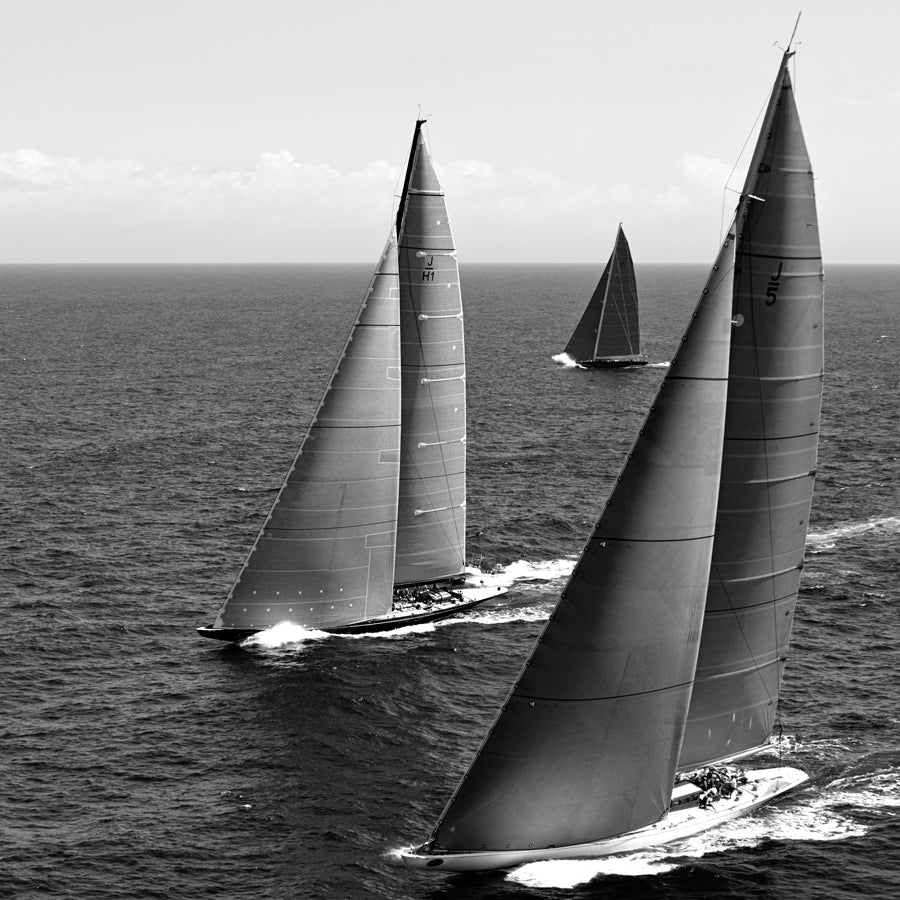
A preview image for Drew's upcoming book: J Class sailboats shot from the air during the Rolex Maxi Cup in August 2014.

